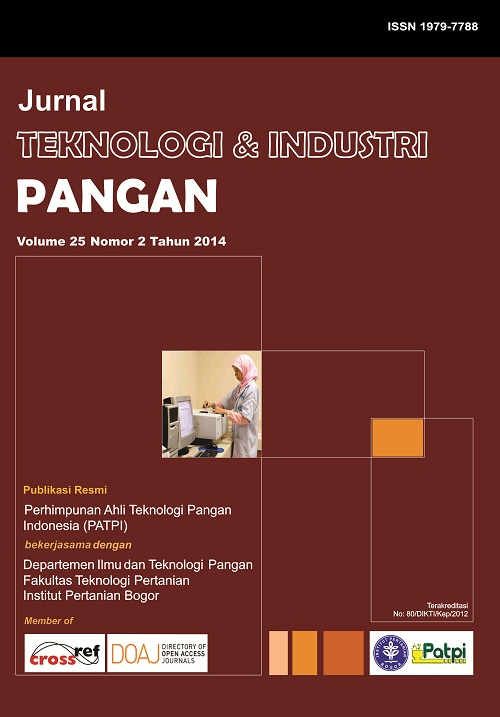UTILIZATION OF RESPONSE SURFACE METHODOLOGY IN THE OPTIMIZATION OF ROSELLE ICE CREAM MAKING [Penggunaan Response Surface Methodology dalam Optimisasi Pembuatan Es Krim Rosella]
Abstract
This research was carried out to develop functional ice cream product with natural colorant derived from the optimum set of roselle calyces extract and citric acid levels. Although citric acid can improve red color stability of rosella, its addition is limited due to the acidic and bitter aftertaste it imparts. Response surface methodology (RSM) was employed to analyze the effect of roselle calyces extract and citric acid on the physico-chemical characteristics and sensory acceptance of ice cream. A central composite design consisting of two independent variables (roselle calyces extract and citric acid levels) in a five levels pattern (-1.41421, -1, 0, +1, and +1.41421) with 13 runs (formulations) was prepared to establish the optimum set of variables. Higher concentration of roselle calyces extract significantly increased the total anthocyanin content and color acceptance, while decreased the ºHue and pH of ice cream. Higher concentration of citric acid significantly increased the overrun and color acceptance, but decreased the viscosity, ºHue, pH, texture, taste acceptance, and overall acceptance of ice cream. The optimum scores of consumer sensory acceptance were met at 11.5% roselle calyces extract and 1.5% citric acid levels.
Authors
ManuelJ., ParamawatiR., & Pratiwi MasliM. D. (2014). UTILIZATION OF RESPONSE SURFACE METHODOLOGY IN THE OPTIMIZATION OF ROSELLE ICE CREAM MAKING [Penggunaan Response Surface Methodology dalam Optimisasi Pembuatan Es Krim Rosella]. Jurnal Teknologi Dan Industri Pangan, 25(2), 125. https://doi.org/10.6066/jtip.2014.25.2.125
Copyright and license info is not available

